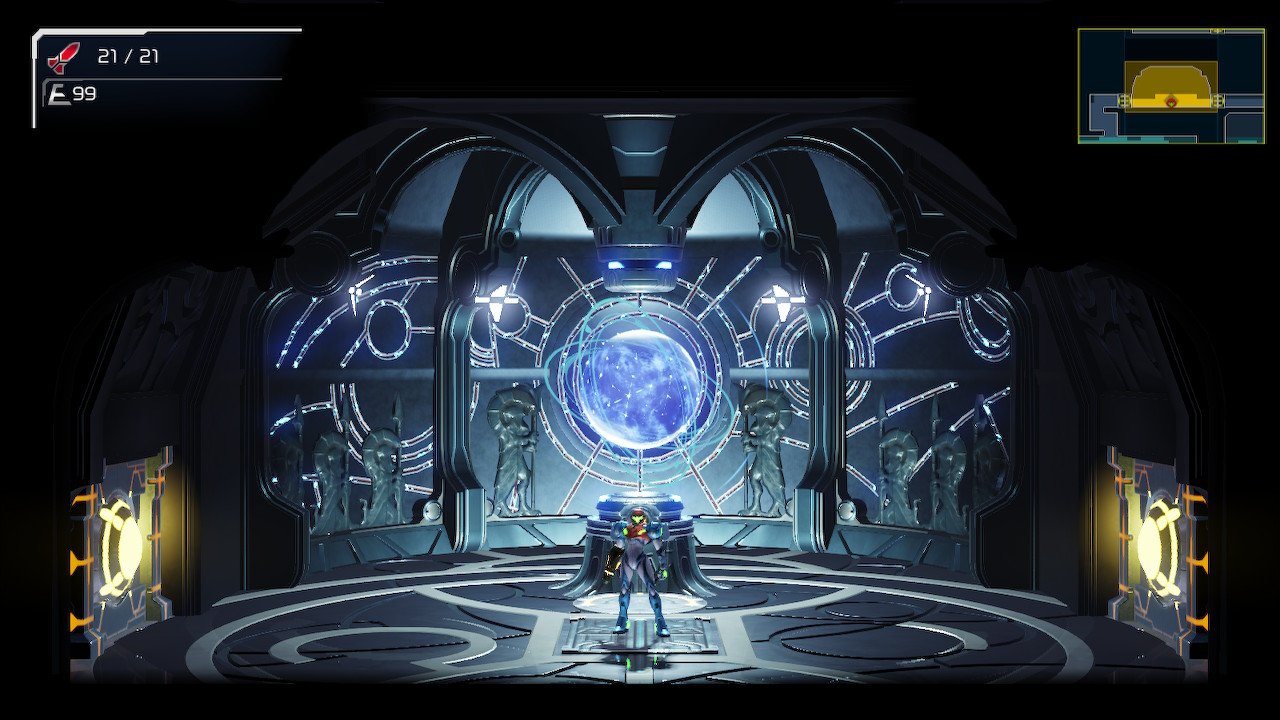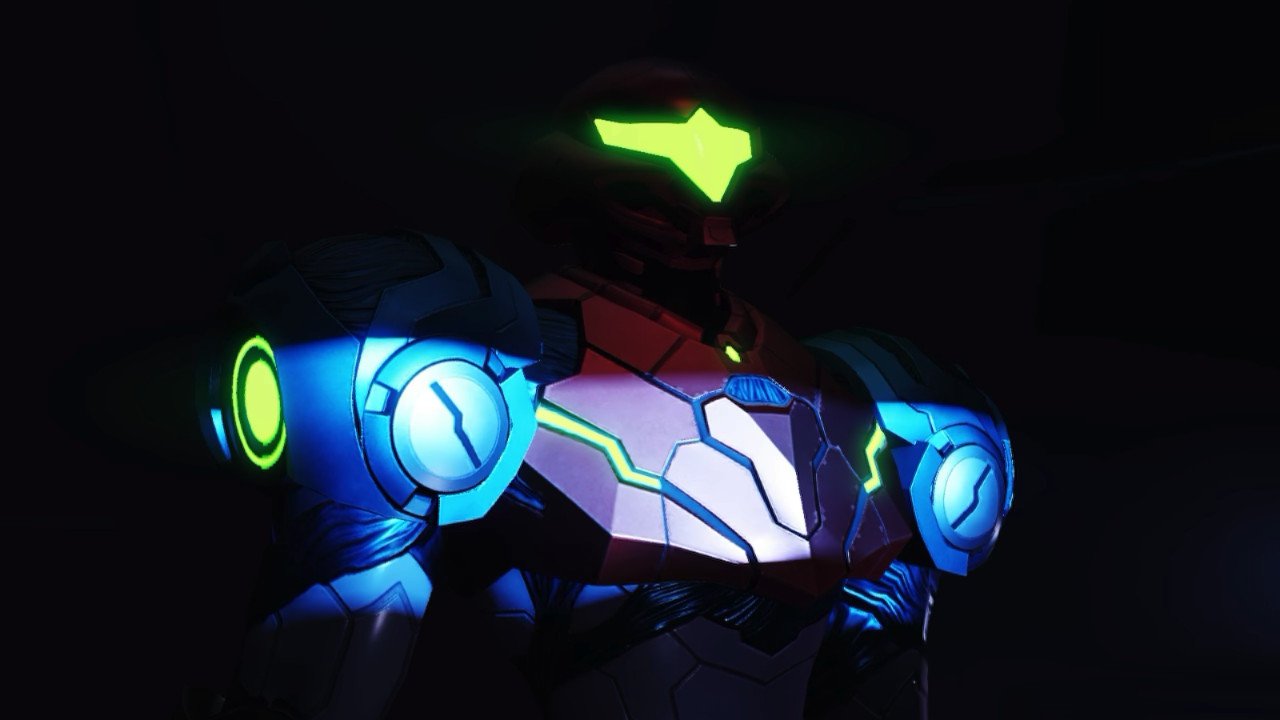Metroid Dread review
Metroid Dread may mark the first time I have cleared a Metroid game on the first playthrough.
From Super Metroid and the original Metroid, to Fusion and the Prime games; I’ve never sat down with a Metroid title and played all the way to the end without dropping it at some point. (I guess I might have cleared Zero Mission on the first attempt, but I can’t really remember.) Usually I get about halfway through a Metroid adventure, end up getting stuck or lost—or both!—and just go play something else. Half of the time, I never end up finishing the game at all.
But Dread had me hooked from start to finish. This game brings classic Metroid back in a big way, and I am here for it!
Now, I’m not usually a big fan of 2.5D visuals, but even I must admit, this game is absolutely gorgeous. Screenshots don't even do a great job of conveying how amazing this game looks because all the animations are just incredibly fluid. Looking at Metroid Dread overall, it is an extremely polished game, in almost every respect. Nintendo games are known for having high production values, but Madrid-based developer Mercury Steam has absolutely crushed it this time.
The world and atmosphere of Dread are stellar, exactly what you want out of a Metroid game. The aliens you encounter are appropriately strange and off-putting, with creature designs generally tend to lean toward being a bit gross. This is especially true of Kraid and his numerous spewing orifices. Though, to be honest, I found that the diligent care put into rendering alien sphincters in full HD was surprisingly impressive.
Our stalwart galactic hero, Samus Aran, controls like a dream this time around. In fact, I’d say she’s almost too fast and agile to handle at first. You really have to get a feel for the controls and acclimate to her speedy run before the gameplay really clicks. Samus’s melee counter returns from Samus Returns (3DS), and it might be a little too powerful, both for dispatching enemies and collecting health/resources. But damn, it’s satisfying. And being able to straight-up punch creatures on-the-go as you sprint through their natural habitat is just a guilty pleasure.
Rarely do your game protagonists feel this legitimately badass from start to finish, but Samus is in a league of her own.
One criticism worth mentioning here: the sheer number of maneuvers at your disposal makes some moves easy to forget, and keeping it all straight can eventually feel a bit overwhelming. The controls for some actions are also just plain uncomfortable, like activating the Speed Booster by clicking the left thumbstick, for example.
Seemingly every button function built into the controller gets used for something—and some of them for multiple actions—so it can be hard to remember how to do everything. This is especially if you take a break from the game at some point. For example, you generally hold the R Button to shoot missiles, but eventually holding down R for a few seconds will activate your Storm Missiles. So it actually becomes rather tricky if you simply want to aim and fire just a single missile.
The new EMMI encounters are a nice touch, throwing a predator at you which cannot be damaged with any of your standard weapons. The player is forced to run, because anytime an EMMI catches up with Samus, it’s an instant game over. Luckily the game is pretty forgiving about this, as you only get reset back to the entrance to the EMMI zone, not all the way back to your last save point. These in-game checkpoints are a very welcome quality of life improvement to the classic Metroid formula.
In order to take out these invulnerable murder bots, Samus has to acquire the Omega Cannon—a weapon so massively destructive, it’s only a temporary power-up. Procuring the Omega Cannon involves finding an area’s “Central Unit” and destroying it. In a fun callback to Metroid history, as each Central Unit is essentially its own Mother Brain-style computer. A little boss fight ensues with an armored core sporting one creepy eye, and its turret guns will shoot missiles and circular energy blasts at you. After taking enough damage, the armor will crack off to reveal that the Central Unit is basically just a big brain with an eye on the front, just like the Mother Brain of old.
Once defeated, Samus can absorb the Central Unit’s energy from its gooey center, and—bingo!—now you have the Omega Cannon…well, for a bit. After using this weapon to dispatch one EMMI, it goes away. Not to say that you won’t get your fill of using this thing, you probably will. In most cases, you’ll actually need to use the Omega Stream—the weapon’s machine gun mode—to blast away at the EMMI’s face until its shielding breaks away. This can take a while to work, and the robot will be slowly stalking towards you the whole time, so it’s easy to still get Samus killed at this stage. Then, once the shielding is removed, you can charge up the Omega Blaster and shoot the EVA—I mean, EMMI—right in the face.
While the various stages of the EMMI encounters are a nice way to shake things up, repeated failures in EMMI segments can still grow pretty damn annoying. For example, it took me way too long to understand that you have to use the Omega Stream first and then the Omega Blaster. So I died many, many times in my attempts to take out the second EMMI. Then there’s the purple EMMI, who is just a total nightmare and I hate. By that point in the game, I think I’d grown weary of the whole 1) “run for your life”, 2) get mega weapon, 3) okay, now “the hunter has become the hunted” dynamic of it all.
The boss fights in Metroid Dread though, generally speaking, are quite excellent. Each match is appropriately tough, a few of them initially giving me the impression that the fight was outright impossible to win. My one complaint about these big boss fights is that they can tend to go on a little too long, especially when one or two mistakes are basically lethal for Samus. Most of the time victory or defeat will ultimately hinge on whether or not you can stick that last melee counter at the end to seal the deal. Still, when you get the hang of how to avoid a boss’s attacks and start nailing every maneuver, it does feel legitimately magical.
(Pro Tip: if you get frustrated in any of these boss fights, just google the boss’s name and get the details on how to tackle it. It’s 2021, man, get over yourself.)
The boss fight with Z-57 is a particular fun one; absolutely epic and a spectacular visual showcase for Dread. The fight is an impressive set-piece, both in its scale and presentation. And even though it took me many, many attempts to win, I genuinely enjoyed the ride. It is really funny to me that anyone would question the value of 2D games—claiming that only 3D games are worth paying $60 for—when for me, the sheer badassery on display in this one boss fight more than justifies the game’s price tag.
Dread’s ultimate antagonist—who is not Ridley or Mother Brain this time—is also quite badass. The shadowy figure makes for an ideal opponent for a powered-up Samus Aran, and their final showdown is genuinely cool. Although, even I’ll admit that the second phase of their fight is a bit of a hassle. (I mean, you end up having to run circles around this dude…in mid-air!)
All in all, Metroid Dread is the triumphant return of the series we’ve all be hoping for. If you're a fan then you are virtually guaranteed to enjoy this game. If you mostly know Samus from Super Smash Bros, then I’d wager that you’re probably still likely to enjoy the adventure. It is definitely challenging, and some players might be frustrated by those harsher boss fights, but I do think this one’s worth the struggle.
In case you’re brand new to Metroid and feel compelled to catch up on the story up before jumping into Dread, I would personally recommend playing these Metroid games in this order:
Metroid: Zero Mission (GBA)
Metroid: Samus Returns (3DS)
Super Metroid (SNES)
Metroid Dread (Switch)











